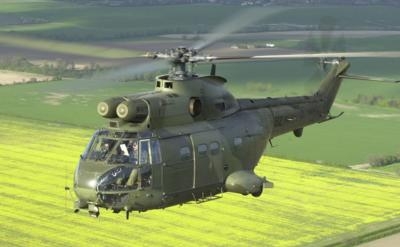Thu, Sep 24, 2020
AD 2020-19-02 Revises The Applicability, Requires Repetitively Inspecting Affected T/R Blades With The New Inspection Procedures
The FAA is superseding Airworthiness Directive (AD) 2000-22-19 for Eurocopter France (now Airbus Helicopters) Model SA330F, G, and J helicopters. AD 2000-22-19 required repetitively inspecting certain tail rotor (T/R) blades for skin debonding and a crack.

Since the FAA issued AD 2000-22-19, the inspection procedures have been revised. Additionally, the FAA is adding an affected part-numbered T/R blade and the FAA-validation for Model SA330F and G helicopters has been cancelled. This new AD revises the applicability, requires repetitively inspecting affected T/R blades with the new inspection procedures, and depending on the inspection results, repairing or replacing the T/R blade. This new AD also prohibits installing an affected T/R blade unless it has passed the inspections. The actions of this AD are intended to address an unsafe condition on these products. This AD becomes effective October 7, 2020.
Supplementary Information: This AD is a final rule that involves requirements affecting flight safety, and the FAA did not provide you with notice and an opportunity to provide your comments prior to it becoming effective. However, the FAA invites you to participate in this rulemaking by submitting written comments, data, or views. The most helpful comments reference a specific portion of the AD, explain the reason for any recommended change, and include supporting data. To ensure the docket does not contain duplicate comments, commenters should send only one copy of written comments, or if comments are filed electronically, commenters should submit them only one time.
Except for Confidential Business Information (CBI) as described in the following paragraph, and other information as described in 14 CFR 11.35, the FAA will file in the docket all comments received, as well as a report summarizing each substantive public contact with FAA personnel concerning this rulemaking during the comment period. The FAA will consider all the comments received and may conduct additional rulemaking based on those comments.
More News
Aero Linx: American Aviation Historical Society AAHS is dedicated to the preservation and dissemination of the rich heritage of American aviation. Our purpose is to collect, preser>[...]
CrewMember (UAS) A person assigned to perform an operational duty. A UAS crewmember includes the remote pilot in command, the person manipulating the controls, and visual observers>[...]
Immediately After The Right Main Tire Contacted The Runway Surface, The Right Main Landing Gear Failed On October 31, 2025, at about 1227 Pacific daylight time, a Maule M-7-235A, N>[...]
Also: IAE Acquires Diamond Trainers, Army Drones, FedEx Pilots Warning, DA62 MPP To Dresden Tech Uni The danger to the flight training industry and our future pilots is clear. Dona>[...]
"On December 3, 2025, at approximately 10:45 a.m., a Thunderbird pilot ejected safely from a F-16C Fighting Falcon aircraft during a training mission over controlled airspace in Ca>[...]
 ANN's Daily Aero-Linx (12.03.25)
ANN's Daily Aero-Linx (12.03.25) ANN's Daily Aero-Term (12.03.25): CrewMember (UAS)
ANN's Daily Aero-Term (12.03.25): CrewMember (UAS) NTSB Prelim: Maule M-7-235A
NTSB Prelim: Maule M-7-235A Airborne-Flight Training 12.04.25: Ldg Fee Danger, Av Mental Health, PC-7 MKX
Airborne-Flight Training 12.04.25: Ldg Fee Danger, Av Mental Health, PC-7 MKX Aero-News: Quote of the Day (12.04.25)
Aero-News: Quote of the Day (12.04.25)



